
Moderating Effects of Dark Triad on the Relationships of Mobbing and Abusive Supervision with Outcomes
[Los efectos moderadores de la “trĂada oscura” en las relaciones del acoso y la supervisiĂłn abusiva con los resultados]
Elif Bingül and Aslı Göncü-Köse
Çankaya University, Ankara, Türkiye
https://doi.org/10.5093/jwop2024a7
Received 9 February 2024, Accepted 5 July 2024
Abstract
The Dark Triad (DT) personality traits (i.e., Machiavellianism, narcissism, and psychopathy) are among the antecedents of workplace mistreatment (WM). However, we have limited knowledge regarding how the DT traits of victims affect their responses to WM. We investigated the moderating effects of the DT in the links of mobbing and abusive supervision with job satisfaction, organizational citizenship behaviors (OCBs), and counterproductive work behaviors (CWBs). Data were collected from 715 working adults. Employees who scored high on narcissism were more likely to have higher scores on CWBs than those who scored low on narcissism in case of mobbing and abusive supervision. Individuals who scored high on psychopathy reported higher levels of job satisfaction under high mistreatment conditions than those who scored low on psychopathy. Individuals who scored high on Machiavellianism reported higher levels of OCBs and lower levels of CWBs under high mistreatment than those who scored low on Machiavellianism.
Resumen
Los rasgos de personalidad de la “tríada oscura” (TO, es decir, el maquiavelismo, el narcisismo y la psicopatía) se encuentran entre los antecedentes del maltrato en el trabajo (MT). No obstante, limitamos el conocimiento al grado en el que afectan los rasgos TO de las víctimas a su reacción al MT. Indagamos en los efectos moderadores de la TO en la relación que tienen el acoso y supervisión abusiva con la satisfacción laboral, los comportamientos de ciudadanía organizativa (CCO) y los comportamientos contraproductivos en el trabajo (CCT). Se recogieron datos de 715 adultos laboralmente activos. Era más probable que los empleados con una puntuación elevada en narcisismo tuvieran puntuaciones elevadas en CCT que los que puntuaban bajo en narcisismo cuando había acoso y supervisión abusiva. Quienes tenían puntuaciones elevadas en psicopatía reconocían un mayor grado de satisfacción en el trabajo cuando el maltrato era elevado que aquellos que tenían una baja puntuación en psicopatía. Aquellos que tenían una puntuación elevada en maquiavelismo reconocían mayor CCO y menor CCT cuando el maltrato era elevado que quienes tenían una puntuación baja en maquiavelismo.
Palabras clave
Acoso laboral, Acoso laboral SupervisiĂłn abusiva, Rasgos de personalidad de la “trĂada oscura”, SatisfacciĂłn laboral, Comportamiento contraproductivo en el trabajo (CCT), Comportamiento de ciudadanĂa organizativa (CCO)Keywords
Mobbing, Abusive supervision, The Dark Triad personality traits, Job satisfaction, CWBs, OCBsCite this article as: Bingül, E. & Göncü-Köse, A. (2024). Moderating Effects of Dark Triad on the Relationships of Mobbing and Abusive Supervision with Outcomes. Journal of Work and Organizational Psychology, 40(2), 77 - 88. https://doi.org/10.5093/jwop2024a7
Correspondence: agoncu@cankaya.edu.tr (A. Göncü-Köse).Employees face many different types of mistreatment that may result from organizational structures, problems in personal communication, and/or due to work-related conflicts (Cortina et al., 2001). Particularly mobbing (Zapf, 1999) and abusive supervision (Tepper, 2000) have gained increased attention from researchers in the fields of organizational psychology and organizational behavior in recent years. Mobbing is defined as systematized attacks on the target individual’s civil rights, such as social confinement (Leymann, 1996). Abusive supervision refers to the perceived experience of antagonistic or hostile behaviors performed by the supervisor which do not include physical harm (Tepper, 2000). As implied by the definitions, different from abusive supervision in which the source is the supervisor, mobbing may be performed by various sources, including peers, subordinates, and supervisors. Hobfoll’s (1989) conservation of resources (CoR) theory suggests that individuals tend to protect their core values and resources, and stress occurs when individuals are faced with any threat to these values and resources. In organizational contexts, different types of mistreatment are likely to create stress by threatening employees’ core resources such as self-esteem and self-efficacy. Consistently, studies conducted up to now revealed that regardless of the source of mistreatment, mobbing and abusive supervision have negative employee-related, work-related, and organizational outcomes (e.g., Akar et al., 2011; Ertüreten et al., 2013; López-Cabarcos et al., 2020; B. Liu et al., 2024). While many studies have been conducted in Western cultural contexts, the number of studies that focused on workplace mistreatment is very limited in Turkiye. In addition, the majority of the studies conducted in both Western cultural contexts and Turkiye focused on one type of mistreatment in their efforts to reveal possible antecedents and consequences. Furthermore, moderating effects of personality variables on the relationships of different types of workplace mistreatment with main attitudinal and behavioral outcomes have been very rarely studied by previous literature (W. Liu et al., 2009) and they have not been studied in Turkiye yet. Finally, the majority of the studies ignore the effects of the dark personality traits on the relationships between workplace mistreatment and outcome variables (Yang et al., 2014). Considering the fact that the Dark Triad (DT; Paulhus & Williams, 2002) personality traits may be related to brighter or darker patterns of behaviors depending on the cultural context (Ma et al., 2021), it is important to investigate the moderating roles of these traits in the relationships between various mistreatment types and behavioral outcomes. The first aim of the study is to investigate the relationships of two different types of workplace mistreatment (i.e., mobbing and abusive supervision) with both positive and negative outcomes within a comprehensive theoretical model. The outcome variables included in the present study are job satisfaction (Vroom, 1962), organizational citizenship behaviors (OCBs; Organ, 1988), and counterproductive work behaviors (CWBs; Spector & Fox, 2002). Mobbing and abusive supervision are expected to be negatively associated with job satisfaction and OCBs, whereas they are suggested to be positively related to CWBs (Allen et al., 2015; Tepper, 2000). Additionally, we suggest that these relationships may be influenced by employees’ dark personality characteristics. Therefore, the study’s second aim is to investigate the moderating roles of the DT personality traits in the relationships of included types of mistreatment and workplace outcomes. The DT personality traits which are subclinical narcissism, Machiavellianism, and psychopathy are expected to moderate the relationship between workplace mistreatment and workplace outcomes in such a way that people with high scores on the DT traits (Paulhus & Williams, 2002) show more negative responses to all types of mistreatment which, in turn, may lead them to report higher scores for the negative outcome variables (i.e., CWBs) and lower scores for the positive outcome variables (i.e., job satisfaction, OCBs) than those with low scores on the DT traits (e.g., O’Boyle et al., 2012). Mistreatment at Workplace The modern era requires us to spend a vast amount of time in the workplace. People face a lot of stressors at work besides the business of life, such as mobbing and abusive supervision, which have undesired outcomes both for employees and organizations. Due to the increased levels of incidents and related negative consequences, researchers have paid high levels of attention to the relationships between workplace mistreatment and its outcomes especially in the last two decades (Anderson & Pearson, 1999; Bhattacharje & Sarkar, 2024; Cao et al., 2023; Welbourne & Sariol, 2017). Mobbing The word mobbing was first used by ethologist Konrad Lorenz (Lorenz, 1963) to define animal behavior. He defined mobbing as an attack from a group of small animals directed at one large animal. This term was adopted by researchers who focused on destructive child behavior, and later Leymann (1996) used the term mobbing to define similar damaging behaviors in the workplace. It is a phenomenon that refers to a systematic psychological terror that includes attacks on one’s civil rights (Leymann, 1996). Early mobbing studies mainly appeared in Nordic countries (Einarsen, 2000). Many studies conducted with different samples from a variety of cultural contexts concluded that mobbing is a very common form of workplace mistreatment. Consistently, a report stated that the mobbing rate in Turkey is around 42% (Turkish Parliament Commission Report, 2011). Mobbing is categorized into five dimensions based on the effects on the victims, which are communication of the victim (e.g., silencing the victim by verbal threats), social relations of the victim (e.g., being isolated or ostracized), victims’ personal rights (e.g., being mocked or rumored), victims’ occupation (e.g., assigning unreasonable tasks), and victims’ physical health (e.g., forcing to work in physically inappropriate conditions) (Leymann., 1996). Antecedents of mobbing are categorized into three dimensions. The first dimension includes organizational antecedents such as work overload, leadership styles, and organizational structure and procedure uncertainties. The second cluster of antecedents consists of group dynamics such as hostility among employees, excessive competition, and ambition. The third dimension includes personal antecedents such as psychological states of employees, personalities, and demographic and perceptual differences (Akar et al., 2011; Duffy & Sperry, 2007). Systematic and prolonged maltreatment and immoral and hateful communication embedded in mobbing may harm the victim in many ways. Psychological, psychosomatic, and social harms may leave the victim helpless and unarmed (Leymann, 1996). Mobbing may continue for years, and victims will likely become doubtful of their coping resources, leading them to experience other adversities (Leymann, 1990). Abusive Supervision In the last decades, the destructive side of leadership has gained increased attention from scholars in the fields of organizational psychology and organizational behavior (Birknerova et al., 2021; Rice et al., 2020; Tepper, 2007). Tepper (2000) described abusive supervision as subordinates’ impression of the supervisor’s continuous verbal or non-verbal behaviors that are characterized by hostility but do not include physical aggression. Abusive supervision is based on a subjective evaluation of the exposed individual (Tepper, 2000). That is, the same behavior performed by a supervisor may be perceived as abusive by one employee but may not be perceived in the same manner by another subordinate. Also, the systematic occurrence of abusive supervision is emphasized in Tepper’s (2000) definition, meaning that a supervisor should systematically perform these behaviors to be defined as an abusive supervisor. Generally, abusive supervisors exhibit behaviors such as non-physical overreactions, including angry outbursts, getting credit for someone else’s work, and insulting a subordinate in public (Tepper, 2007). Abusive supervision has numerous adverse consequences, including increased feelings of injustice, high turnover rates, negative attitudes toward job, organization, and life, increased work-family conflict, depression, and emotional exhaustion (Mackey et al., 2017; Zhang & Liao, 2015). Along with personal characteristics, such as aggressiveness (Michel et al., 2016), miscommunication with subordinates and hostile norms within the organization, may trigger abusive supervision (Zhang & Bednall, 2016). In addition, abusive supervisory behaviors may be evaluated differently depending on organizational or personal norms as well as employees’ emotional states and personality traits. For example, it was found that employees who were less tolerant, agreeable, and emotionally stable (i.e., those who score high on neuroticism) tended to label managers’ behavior as malicious more frequently than individuals with low levels of these traits (Brees et al., 2014). Situational variables may also affect the interpretation of the same behaviors differently. To illustrate this, in times of crisis and stressful working environments, managers’ hostile acts and abusive behaviors are perceived as more tolerable and normal (Tepper et al., 2017). Consequences of Mobbing and Abusive Supervision in the Workplace Adverse Effects on Positive Outcomes: Job Satisfaction and OCBs Job satisfaction is the first dependent variable of this study, and it reflects an individual’s inner appraisal of the job, colleagues, or work environment. Job satisfaction is related to physical (e.g., crowdedness, lighting, etc.), personal (e.g., workload, responsibilities), and organizational factors (e.g., level of structure, organizational policies, and norms), and interpersonal relations with customers, colleagues, and managers (Aziri, 2011; Judge et al., 2017). Another perspective emphasizes an employee’s role, suggesting that an employee’s adaptation to his/her duties influences job satisfaction (Aziri, 2011). Even though definitions vary, it is known that job satisfaction is high to the extent that an individual’s expectations and needs are satisfied in the workplace (Lambert et al., 2002). All types of workplace mistreatment are negatively associated with job satisfaction (e.g., Nguyen & Stinghamber, 2020). Hobfoll’s (1989) conservation of resources theory (CoR) suggests that when resources (e.g., psychological, physical, emotional) are threatened and deprived, individuals exert effort to protect their resources. Workplace mistreatment may deplete employees’ energy to cope with stress and work demands (Akırmak & Ayla, 2019). In general, workplace mistreatment affects employees’ physical health (Reio & Gosh, 2009), turnover intentions (Griffin, 2010), and organizational commitment (Spence Laschinger et al., 2009). More specifically, mobbing leads victims to have low levels of job satisfaction, emotional attachment to the organization, and organizational commitment (Ertüreten et al., 2013). Supporting the notion that abusive supervision is negatively associated with employees’ job satisfaction, particularly supervisor behaviors that intend to inhibit communication and allege an employee, it was found to have the most harmful effect on one’s job satisfaction (Akar et al., 2011). Consistently, the negative relationship between abusive supervision and job dissatisfaction has been established in many studies. Tepper (2000) also stated employees with more abusive supervisors exhibit less positive attitudes toward the job. Research suggests that especially employees who seek the approval of their supervisors have high levels of achievement ambition and desire to prove their competency and suffer from the negative effect of abusive supervision on job satisfaction (Kernan et al., 2011). In line with the theoretical background and the findings of previous research, the first hypothesis is generated as follows: Hypothesis 1a: Mobbing and abusive supervision are negatively related to employees’ job satisfaction. Another dependent variable of the study is OCB (Organ, 1988). To enhance organizational effectiveness, an employee engages in extra-role behaviors such as helping with a work-related problem, behaving kindly, not complaining about problems, and not being wasteful in the workplace, etc., which are included in OCBs (Zellars et al., 2002). According to Organ (1988), OCBs have five sub-dimensions, which are civic virtue (e.g., being dutiful, attending all the meetings), altruism (e.g., helping others), conscientiousness (e.g., being sensitive to organization rules), courtesy (e.g., intention to prevent and minimize problems), and sportsmanship (e.g., being tolerant of problems at the workplace). The Social Exchange Theory (Emerson, 1976) suggests that if there is a change in social settings, it should be reciprocal: the parties repay each other with similar deeds. Resources are swapped in similar manners (good or bad). The perpetrator may undermine social exchange by engaging in mobbing and abusive supervision; as a result, employees may prefer to avoid nice acts like OCBs. Consistently, Çınar (2015) and Ertürk (2015) found a negative relationship between mobbing and OCBs. The literature suggests that abusive supervision harms extra-role performance behaviors such as voice behaviors and OCBs (Zhang & Liao, 2015). Therefore, the next hypothesis is as follows: Hypothesis 1b: Mobbing and abusive supervision are negatively related to OCBs. Positive Effects on Negative Outcomes: CWBs CWBs are defined as intentional behaviors of employees that do not comply with the corporate goals and values and disrupt the organization’s functioning (Spector & Fox, 2002). For instance, stealing from the organization, sabotaging others’ work, and withdrawing effort are listed among CWBs. Studies showed a positive relationship between workplace incivility and CWBs (Penney & Spector, 2005). If it is believed that impolite behavior is done to harm someone, a negative emotional state arises (Sakurai & Jex, 2012). Consistently, it was also found that negative emotions mediated and strengthened the relationship between incivility and CWBs. CWBs may also emerge as a way of coping with stress aroused by workplace mistreatment. Therefore, the next hypothesis is generated as follows: Hypothesis 2: Mobbing and abusive supervision are positively related to employees’ CWBs. Moderating Effects of the Dark Triad Personality Traits The Dark Triad (DT) research has skyrocketed in recent years. Three callous personality traits that are present at the subclinical level have been defined as DT: narcissism, Machiavellianism, and psychopathy (Paulhus & Williams, 2002). These three personality traits are intercorrelated and may have overlapping dimensions; yet, they are independent traits. Narcissism encompasses a sense of superiority and grandiosity, Machiavellianism comprises being manipulative, cold, and fraudulent, and psychopathy involves lack of empathy, the use of hostile tactics, and a tendency for sabotage (e.g., Palmer et al., 2017). Subclinical narcissism includes hubris, the desire to be the center of attention and authority, excessive level of need for admiration, and approval by others (Özsoy, 2018). Machiavellianism originated from Niccolo Machiavelli’s famous book "The Prince" (Machiavelli & Bull, 2003). Christie (1970) built upon Machiavelli’s ideas and defined individuals who had a Machiavellian personality as those who behaved in a goal- and self-centered manner endorsed unethical behaviors, and thought that every means to the desired end is justifiable. The most prominent features of subclinical psychopathy are lacking remorse and empathy, extreme levels of selfishness, and impulsiveness (Özsoy, 2018). The common elements of the DT are being malicious, an inclination to promote one’s self, emotional frostiness, dishonesty, and offensiveness. Literature suggests that people who score high on the DT personality traits tend to engage in more deviant behaviors that involve aggression and hostility as a way of revenge (Palmer et al., 2017). The Social Exchange Theory points out a mutual exchange of rewards and costs in relationships (Emerson, 1964). Blau (1986) explained social exchange as a favor including an expectation of return. It is widely used for explaining the effects of DT personality traits on work outcomes. In the workplace, exchange includes solid rewards such as salary or psychological rewards such as admiration. Humans are social beings and they need cooperation and reciprocity to maintain interpersonal relationships. On the other hand, Machiavellianism, narcissism, and psychopathy disrupt interpersonal relationships since they exploit self-serving strategies (O’Boyle et al., 2012). Employees whose DT scores are high are likely to undermine reciprocity and relationships. Consistently, many studies revealed that the DT is positively related to workplace deviance and Cohen and Özsoy (2021) found that the dark triad personality traits are related to CWBs in a Turkish sample. Narcissists believe that they are superior to others so rules do not apply to them. Machiavellians do not trust others so they are skeptical about reciprocity. Individuals who score high on psychopathy do not care much about others’ suffering (O’Boyle et al., 2012). In the current study, we suggest that Machiavellianism, narcissism, and psychopathy moderate the relationships between workplace mistreatment and workplace outcomes. Individuals who score high on the DT personality traits are suggested to give more extreme and negative reactions to different forms of workplace mistreatment than individuals who score low on these traits. Therefore, it is expected that high levels of narcissism, Machiavellianism, and psychopathy strengthen the relationships between workplace mistreatment and the outcomes examined in the present study. Hypothesis 3a: Narcissism moderates the relationships of mobbing and abusive supervision with job satisfaction in such a way that individuals who score high on narcissism report significantly lower levels of job satisfaction when they are exposed to high levels of mobbing and abusive supervision than those who score low on narcissism. Hypothesis 3b: Psychopathy moderates the relationships of mobbing and abusive supervision with job satisfaction in such a way that individuals who score high on psychopathy report significantly lower levels of job satisfaction when they are exposed to high levels of mobbing and abusive supervision than those who score low on psychopathy. Hypothesis 3c: Machiavellianism moderates the relationships of mobbing and abusive supervision in such a way that individuals who score high on Machiavellianism report significantly lower levels of job satisfaction when they are exposed to high levels of mobbing and abusive supervision than those who score low on Machiavellianism. Hypothesis 4a: Narcissism moderates the relationships of mobbing and abusive supervision with OCBs in such a way individuals who score high on narcissism report significantly lower levels of OCBs when they are exposed to high levels of mobbing and abusive supervision than those who score low on narcissism. Hypothesis 4b: Psychopathy moderates the relationships of mobbing and abusive supervision with OCBs in such a way individuals who score high on psychopathy report significantly lower levels of OCBs when they are exposed to high levels of mobbing and abusive supervision than those who score low on psychopathy. Hypothesis 4c: Machiavellianism moderates the relationships of mobbing and abusive supervision with OCBs in such a way that individuals who score high on Machiavellianism report lower levels of OCBs when they are exposed to high levels of mobbing and abusive supervision than those who score low on Machiavellianism. Hypothesis 5a: Narcissism moderates the relationships of mobbing and abusive supervision with CWBs in such a way that individuals who score high on narcissism report higher levels of CWBs when they are exposed to high levels of mobbing and abusive supervision than those who score low on narcissism. Hypothesis 5b: Psychopathy moderates the relationships of mobbing and abusive supervision with CWBs in such a way that individuals who score high on psychopathy report higher levels of CWBs when they are exposed to high levels of mobbing and abusive supervision than those who score low on psychopathy. Hypothesis 5c: Machiavellianism moderates the relationships of mobbing and abusive supervision with CWBs in such a way that individuals who score high on Machiavellianism report higher levels of CWBs when they are exposed to high levels of mobbing and abusive supervision than those who score low on Machiavellianism. Participants and the Procedure A total of 7151 working adults who have been working in the same organization and with the same immediate supervisor at least for one year participated. Participation was voluntary. Before starting the online survey an informed consent clarifying all necessary information regarding the survey and the research was provided. Ethical approval for the study was obtained from the Social Sciences and Humanities Ethics Committee of Çankaya University. The online survey was prepared using Qualtrics software. The authors briefly described the topic of the study and shared the questionnaire link on online professional networks such as Linkedin, e-mail, and WhatsApp groups and via their social media accounts such as Twitter and Instagram. In addition, personal communication was established with colleagues and Human Resources specialists in different organizations. The online gift cards worth 25 TL were sent to participants who correctly responded to the bogus items, filled out the complete survey package, and gave an e-mail address. The participants’ demographic characteristics are presented in Table 1. Measures Mobbing Mobbing was measured by the Psychological Harassment at Work Scale developed by Tınaz et al. (2010) in Turkish. It consists of 28 items and four sub-dimensions: work-oriented behaviors, damage to reputation, exclusionary behaviors, and verbal-written-visual attacks. Participants are asked to indicate how often they have been exposed to each behavior in the last six months by using a 5-point Likert scale ranging from 1 = never to 5 = always. A sample item is “I am criticized for every task I do and my mistakes are held against me”. Cronbach’s alpha of the scale was .96. Abusive Supervision The 15-item abusive supervision scale developed by Tepper (2000) and adapted to Turkish by Ülbeği et al. (2014) was used to evaluate abusive supervision. Participants are asked to evaluate how often their immediate supervisor exhibits the behaviors listed in the items by using a 5-point Likert-type scale ranging from 1 = I never remember he/she treated me this way to 5 = he/she always treats me this way. A sample item is "S/he... tells me my thoughts or feelings are stupid.” Cronbach’s alpha reliability coefficient was .94. Job Satisfaction The one-item Faces Scale developed by Kunin (1955) was used to measure general job satisfaction. The scale includes seven different facial expressions, ranging from the lowest to the highest satisfaction level and participants are asked to indicate which facial expression best reflects the general satisfaction level in their work. Facial expressions of both men and women are shown to the participants. The scale was adapted to Turkish by Erol-Korkmaz (2010). OCBs The 20-item OCB scale developed by Spector et al. (2010) and adapted to Turkish by Öztaylan and Göncü-Köse (2018) was used to measure OCBs. Participants are asked how often they display the given behavior in their current workplace. Participants give their answers using a 5-point Likert scale ranging from 1 = never to 5 = every day. A sample item is “I took the time to advise, coach, or mentor a colleague.” Cronbach’s alpha reliability coefficient of the scale was .92. CWBs The 10-item short form of the Counterproductive Work Behavior Checklist developed by Spector et al. (2006) and adapted to Turkish by Öcel (2010) was used to assess CWBs. Participants are asked how frequently they performed each behavior described in the items and give their answers using a 5-point Likert scale ranging from 1 = never to 5 =every day. A sample item is “Deliberately wasting the tools/equipment belonging to your employer.” Cronbach’s alpha reliability coefficient was .87. The DT Traits The Short Dark Triad (SD3) scale developed by Jones and Paulhus (2014) and adapted to Turkish by Ağralı Ermiş et al. (2018) was used to assess narcissism, Machiavellianism, and psychopathy. Each trait was evaluated with nine items and the scale consists of 27 items. Participants answer using a 5-point Likert-type scale ranging from 1 = never to 5 = always. Sample items are “You can do anything to attract important people to your side (Machiavellianism)”, “Revenge must be taken swiftly and badly (psychopathy)", and “I know I’m special because everybody tells me that (narcissism).” Cronbach’s alphas of the Machiavellianism, narcissism, and psychopathy subscales were .66, .60, and .72, respectively. Demographic Information Form Participants’ age, gender, education level, sector, line of business, tenure at the current job, tenure with the immediate supervisor, and the gender of the immediate supervisor were asked in the demographic information form. Descriptive Statistics and Intercorrelations among the Study Variables The job satisfaction scale had a relatively high mean value, whereas abusive supervision, mobbing, and CWB scales had relatively low means (see Table 2). The means of the remaining scales were close to the midpoint. Mobbing was positively correlated with abusive supervision, CWBs, and psychopathy. Further, mobbing was negatively correlated with job satisfaction. Abusive supervision was also positively correlated with CWBs and psychopathy but negatively correlated with job satisfaction. Job satisfaction was positively correlated with narcissism. Also, job satisfaction was negatively associated with CWBs, Machiavellianism, and psychopathy. OCBs were positively correlated with narcissism. Also, OCBs were negatively related to CWBs. CWBs were positively correlated with psychopathy. Machiavellianism was positively associated with psychopathy and narcissism. Psychopathy was positively correlated with narcissism. Table 2 Bivariate Correlations among the Study Variables   Note. Gender was coded as 1 for females and 2 for males; education level ranges from 1 (Primary school) to 7 (Doctoral degree). * p < .05, ** p < .01. Hypothesis Testing To test the hypothesized regression model, SEM was conducted using AMOS 25.0 (Arbuckle, 2006). We proposed that mobbing and abusive supervision would be significantly related to job satisfaction, OCBs, and CWBs (see Table 3). The results indicated that the model provided good fit to the data, c2(N = 715, df = 6) = 9.52, CFI = .99, TLI = .99, NFI = .99, RMSEA = .03, p > .05. Mobbing (β = -.17, p = .01) and abusive supervision (β = -.16, p = .01) were negatively related to job satisfaction. Therefore, Hypothesis 1a was fully supported. Hypothesis 1b proposed that mobbing and abusive supervision would be negatively associated with OCBs. However, mobbing (β = .03, p = .68) and abusive supervision (β = -.08, p = .25) were not significantly related to OCBs. Therefore, Hypothesis 1b was not supported. Finally, mobbing (β = .52, p < .001) and abusive supervision (β = .22, p < .001) were significantly and positively related to CWBs. Therefore, Hypothesis 2 was fully supported. To investigate the moderating effects of the DT personality traits in the relationships of mobbing and abusive supervision with the outcome variables a set of moderation analyses were conducted using Process Macro for SPSS (Hayes et al., 2017). Results revealed that the interaction effects of mobbing and abusive supervision with narcissism on job satisfaction were not significant (B = -0.05, SE = .10, p = .61, 95% CI [-.26, .15]; (B = -0.01, SE = .09, p = .90, 95% CI [-0.19, 0.17], respectively.). Therefore, Hypothesis 3a was not supported. The interaction effect of psychopathy and mobbing on job satisfaction was significant (B = 0.33, SE = .10, p < .001, 95% CI [0.14-0.52]). The unstandardized simple slope for the employees -1 SD below the mean of psychopathy was B = -1.25, SE = .11, p < .001, 95% CI [-1.48, -1.03]. The unstandardized simple slope for the employees +1 SD above the mean of psychopathy was B = -0.80, SE = .09, p < .001, 95% CI [-0.97, -0.62]. Contrary to expectation, employees who scored high on psychopathy were more likely to have higher job satisfaction scores under high levels of mobbing than employees who scored low on psychopathy, R² = .20, F(3, 711) = 60,64 , p <.001 (Figure 1). Furthermore, the interaction effect of psychopathy and abusive supervision on job satisfaction was significant (B = 0.35, SE = .09,p < .01, 95% CI [.17, .53]. The unstandardized simple slope for the employees -1 SD below the mean of psychopathy was B = -1.2, SE = .11, p < .001, 95% CI [-1.4, -.97]. The unstandardized simple slope for the employees +1 SD above the mean of psychopathy was B = -0.70, SE = .08, p < .001, 95% CI [-0.87, -0.54]. Interestingly, when abusive supervision was high employees who had high scores of psychopathy reported higher levels of job satisfaction than those who had low scores on psychopathy, R² = .20, F(3, 711) = 58.499, p < .001 (Figure 2). In conclusion, Hypothesis 3b was not supported because the effects were in the opposite direction of what we suggested. Figure 2 Moderating Effect of Psychopathy on the Relationship between Abusive Supervision and Job Satisfaction.   Machiavellianism did not moderate the relationships of mobbing and abusive supervision with job satisfaction (B = 0.06, SE = .12, p = .58, 95% CI [-0.17, 0.30]); B = -0.01, SE = .12, p = .97, 95% CI [-0.23, 0.22]; respectively). Therefore, Hypothesis 3c was not supported. Moderating effects of narcissism in the relationships of mobbing and abusive supervision with OCBs were also not significant (B = -0.09, SE = .06, p = .13, 95% CI [-0.20, 0.02]; B = -0.08, SE = .06, p = .17, 95% CI [-0.19, 0.03], respectively). Therefore, Hypothesis 4a was not supported. Psychopathy had no significant moderating effect on the relationships of mobbing and abusive supervision with OCBs (B = 0.02, SE = .05, p = .66, 95% CI [-0.08, 0.12]; B = 0.02, SE = .05, p = .70, 95% CI [-0.08, 0.12], respectively). Therefore, Hypothesis 4b was not supported. The moderating effect of Machiavellianism in the relationship between mobbing and OCBs was significant (B = 0.22, SE = .06, p < .001, 95% CI [0.09, 0.34]. The unstandardized simple slope for the employees -1 SD below the mean of Machiavellianism was B = -0.09, SE = .05, p = .11, 95% CI [-0.19, 0.02]. The unstandardized simple slope for the employees +1 SD above the mean of Machiavellianism was B = 0.17, SE = .05, p = .002, 95% CI [0.06, 0.27]. Interestingly, when mobbing was high, employees who had high Machiavellianism scores performed higher levels of OCBs than those who had low levels of Machiavellianism. In the low mobbing condition, employees with high Machiavellianism scores reported significantly lower scores on OCBs than those with low Machiavellianism scores (Figure 3). Figure 4 Moderating Effect of Machiavellianism on the Relationship between Abusive Supervision and OCBs.   Machiavellianism’s moderating effect in the relationship between abusive supervision with OCBs was also significant (B = 0.17, SE = .06,p < .01, 95% CI [0.05, 0.30]). The unstandardized simple slope for the employees -1 SD below the mean of Machiavellianism was B = -0.08, SE = .05, p = .12, 95% CI [-0.19, 0.02]. The unstandardized simple slope for the employees +1 SD above the mean of Machiavellianism was B = 0.12, SE = .05, p < .05, 95% CI [0.02, 0.22]. When abusive supervision was high, employees who scored high on Machiavellianism were more likely to exhibit more OCBs than those who scored low on Machiavellianism, R² = 0.12, F(3, 711) = 2.97, p <.05 (Figure 4). However, when their supervisors did not perform abusive supervisory behaviors, employees with high Machiavellianism scores reported significantly lower scores on OCBs than those with low Machiavellianism scores. Because the directions of the significant interactions were different from the suggested directions, Hypothesis 4c was not supported. The moderating effect of narcissism was significant in the relationship between mobbing and CWBs (B = 0.14, SE = .04,p < .001, 95% CI [0.07, 0.22]). The unstandardized simple slope for the employees -1 SD below the mean of narcissism was B = 0.46, SE = .04, p < .001, 95% CI [0.40, 0.53]. The unstandardized simple slope for the employees +1 SD above the mean of narcissism was B = -0.65, SE = .03, p < .001, 95% CI [0.59, 0.72]. In line with the expectations, employees who scored high on narcissism were more likely to have higher scores on CWBs when mobbing was high than those who scored low on narcissism, R² = .44, F(3, 711) = 184,89 , p < .001 (Figure 5). The interaction effect of narcissism and abusive supervision on CWBs was also significant (B = 0.17, SE = .04, p < .001, 95% CI [0.10, 0.25]). The unstandardized simple slope for the employees -1 SD below the mean of narcissism was B = 0.39, SE = .03, p < .001, 95% CI [0.32, 0.46]. The unstandardized simple slope for the employees +1 SD above the mean of narcissism was B = 0.62, SE = .04, p < .001, 95% CI [0.55, 0.69]. As proposed, when abusive supervision was high, employees who had high narcissism scores engaged in more CWBs than employees who had low narcissism scores, R² = .39, F(3, 711) = 148,73 , p < .001 (Figure 6). Therefore, Hypothesis 5a which suggested that narcissism would moderate the relationships of mobbing and abusive supervision with CWBs was fully supported. The interaction effects of mobbing and abusive supervision with psychopathy on CWBs were not significant (B = 0.04, SE = .03, p = .25, 95% CI [-0.03, 0.11]; B = 0.04, SE = .03, p = .20, 95% CI [-0.02, 0.11], respectively). Therefore, Hypothesis 5b was not supported. The moderating effect of Machiavellianism on the relationship between mobbing with CWBs was significant (B = -0.21, SE = .04, p < .001, 95% CI [-0.29, -0.13]). The unstandardized simple slope for the employees -1 SD below the mean of Machiavellianism was B = 0.69, SE = .03, p < .001, 95% CI [0.62, 0.76]. The unstandardized simple slope for the employees +1 SD above the mean of Machiavellianism was B = 0.44, SE = .03, p < .001, 95% CI [0.37, 0.51]. To summarize, employees who had high levels of Machiavellianism were more likely to exhibit fewer CWBs when mobbing was high than those who had low scores on Machiavellianism. When mobbing was low, however, employees who had high Machiavellianism scores performed more CWBs than those who had low Machiavellianism scores, R² = .44, F(3, 711) = 189,87 , p < .001 (Figure 7). The moderating effect of Machiavellianism in the relationship between abusive supervision with CWBs was also significant (B = -0.17, SE = .04, p < .001, 95% CI [-0.25, 0.08]. The unstandardized simple slope for the employees -1 SD below the mean of Machiavellianism was B = 0.60, SE = .03, p < .001, 95% CI [0.53, 0.67]. The unstandardized simple slope for the employees +1 SD above the mean of Machiavellianism was B = 0.40, SE = .03, p < .001, 95% CI [0.34, 0.47]. Employees who had low scores on Machiavellianism engaged in higher levels of CWBs when abusive supervision was high than those who scored high on Machiavellianism. When abusive supervision was low, employees who had high levels of Machiavellianism were more likely to engage in more CWBs than those who had low levels of Machiavellianism, R² = .38, F(3, 711) = 142,82, p <.001 (Figure 8). Since the directions of the significant interactions were opposite of the suggested directions, Hypothesis 5c was not supported. Figure 8 Moderating Effect of Machiavellianism on the Relationship between Abusive Supervision and CWBs.  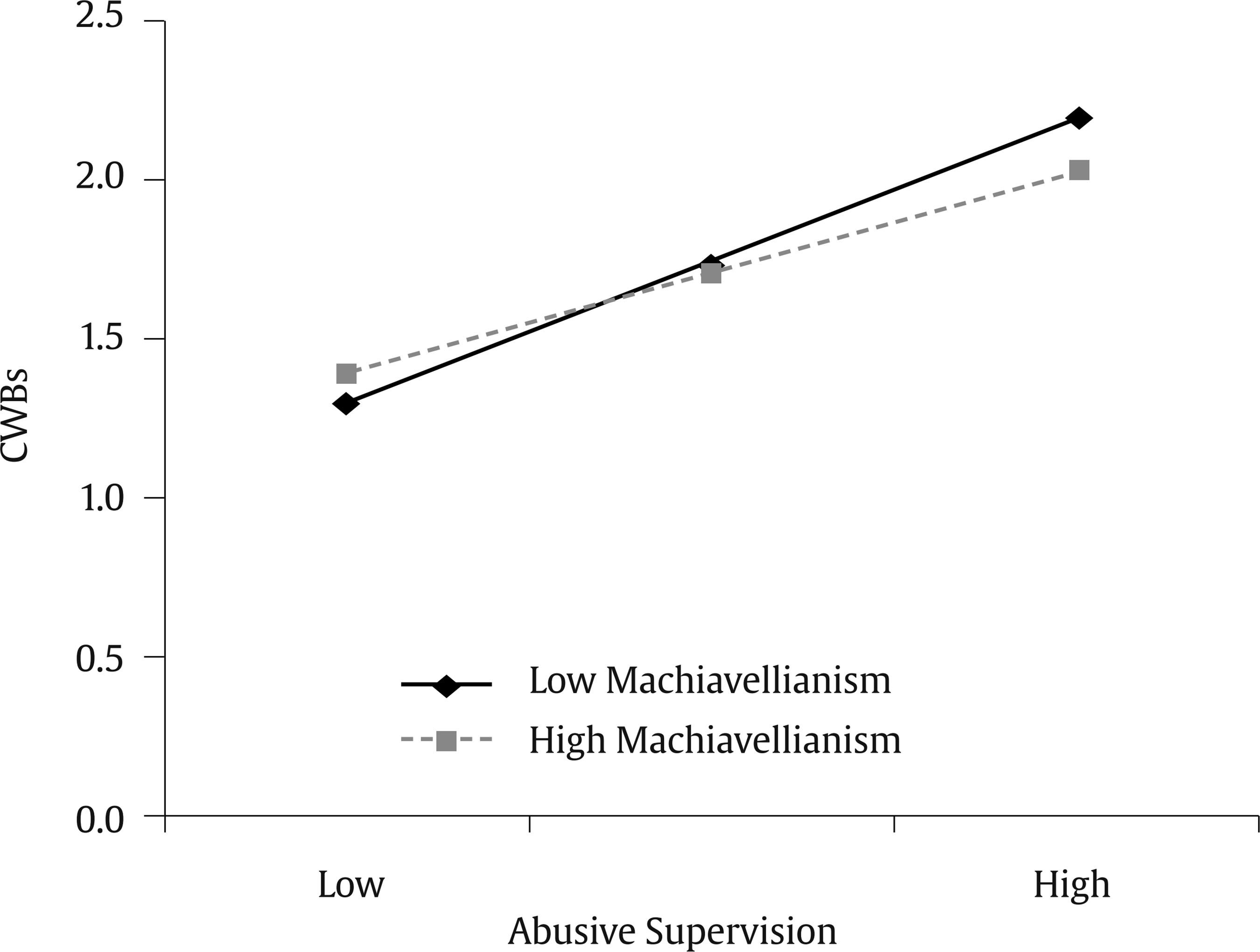 One of the main contributions of the study is providing support for the existing body of research by evaluating the links of different types of workplace mistreatment with important outcomes using a comprehensive model. Another main contribution of the study is shedding light on the moderating effects of the DT personality traits on the relationships of mobbing and abusive supervision with positive (i.e., job satisfaction, and OCBs) and negative (i.e., CWBs) workplace outcomes. Under high mobbing and abusive supervision conditions, employees who had high levels of psychopathy reported slightly more job satisfaction than employees who scored low on psychopathy. On the other hand, in low mobbing and abusive supervision conditions, employees who had low psychopathy levels reported higher levels of job satisfaction than those who scored high on psychopathy. Employees with high scores of psychopathy may not be affected by mobbing and abusive supervisory behaviors as much as employees with low scores of psychopathy. Psychopathy tendency includes being emotionless, cold, and distant. These traits are likely to affect their perceptions of exposure to different forms of workplace mistreatment as well as their related reactions to these behaviors. Contrary to our expectations, the interaction effects of mobbing and abusive supervision with psychopathy on CWBs were not significant. Many studies are showing that psychopathy and CWBs are positively and strongly related to each other (e.g., Neo et al., 2018) and the correlation analyses in the present study also showed that psychopathy was the only trait among the DT that was positively associated with CWBs. It is quite likely for employees with psychopathy tendency to engage in CWBs especially when they are faced with workplace mistreatment. On the other hand, the interaction effects of mobbing and abusive supervision with narcissism on CWBs were significant. Employees with high narcissism scores may be more reactive to workplace mistreatment than employees with high psychopathy scores. From this point of view, employees who score high on narcissism may be evaluated as equally reactive or more reactive to workplace mistreatment than employees with high scores on psychopathy. Another explanation may be lying down in the structure of psychopathy. Generally, psychopathy is evaluated as a unidimensional construct. However, several researchers argue that psychopathy has two dimensions which are primary and secondary psychopathy. Some theories suggest that psychopathy has two factors; primary psychopathy and secondary psychopathy. These two factors are related but distinct constructs. Psychopaths are known for being hostile, destructive, self-centered, and also having a lack of empathy (Skeem et al., 2003). They may exhibit many forms of antisocial behaviors with no feelings of guilt. Despite these commonalities, the two factors are different. Primary psychopaths have a constitutional deficit that leads them to act callously. Secondary psychopaths are considered to have underlying emotional experiences like parental rejection, abuse, or harsh environmental conditions that cause them to be hostilely reactive (Del Gazio & Falkenbach, 2008; Skeem et al., 2003; Yıldırım & Derksen, 2015). Furthermore, secondary psychopaths score high on all psychopathy scales but not on emotional dysfunction (Yıldırım & Derksen, 2015). The emotional reactiveness in secondary psychopathy may stem from an impairment of the top-down appraisal and emotional regulation processes (Yıldırım & Derksen, 2015). Studies suggest that secondary psychopathy involves high levels of disinhibition and malice behaviors; nevertheless they do not embody fearlessness as high as primary psychopaths. As a result, they score low on boldness and fearless dominance scales (Yıldırım & Derksen, 2015). Disinhibition which characterizes secondary psychopathy found to be related to engaging in CWBs whereas primary psychopathy was found to be related to CWBs only when the levels of education and political skills of the individual were low (Blickle & Schütte, 2017; Neo et al., 2018). Therefore, we suggest that future studies should focus more on secondary psychopathy to shed further light on this issue. Similarly, investigating narcissism as a two-dimensional construct may reveal differential relationships with outcome variables in future studies. Grandiose narcissism is characterized by aggression, dominance, and grandiosity, whereas vulnerable narcissism reflects a defensive and insecure grandiosity that includes feelings of inadequacy, incompetence, and unstable or fragile self-esteem (Miller et al., 2012). It is plausible to suggest that those who score high on grandiose narcissism are more likely to perform deviant behaviors in the face of workplace mistreatment than individuals who score high on vulnerable narcissism, as they are likely to think that they are entitled to do so. Finally, although different studies suggest various multidimensional structures for Machiavellianism, future studies may include multidimensional Machiavellianism scales and investigate how dimensions such as views and tactics (Monaghan et al., 2020) moderate the proposed relationships in the present study. The results indicated that in high mobbing conditions employees with high scores on Machiavellianism reported more OCBs than those who had low scores on Machiavellianism. The literature revealed that Machiavellianism was positively associated with impression management (Becker & O’Hair, 2007; Uppal, 2021). Moreover, Çivit and Göncü-Köse (2021) found that Machiavellianism was positively associated with OCBs. Consistently, one explanation may be that such employees may try to impress others and convince them that they are committed employees who contribute to the organization by engaging in high levels of OCBs. Indeed, Çivit and Göncü-Köseargued that although underlying motivation seems to be impression management, Machiavellians might be the least destructive employees when compared to employees who scored high on the other two of the DT personality traits. Yet, studies that focus on the relationships between Machiavellianism and positive organizational attitudes and behaviors are very rare in the literature. Therefore, future studies are suggested to examine the mediating effects of impression management in the relationship between Machiavellianism with other constructive or extra-role behaviors. The results indicated that employees with high scores on Machiavellianism were more likely to report more CWBs under low mobbing and abusive supervision conditions than those who scored low on Machiavellianism. On the other hand, under high mobbing and abusive supervision conditions, employees with high Machiavellianism scores reported fewer CWBs than employees with low Machiavellianism scores. Under normal circumstances (i.e., low mobbing and abusive supervision conditions) employees who have high scores on Machiavellianism may engage in more deviant behaviors such as CWBs due to their unethical and manipulative characteristics. On the other hand, when they become victims of mobbing or their supervisors are hostile towards them, employees with high Machiavellianism tendencies may prefer to kneel and intentionally decrease their deviant behaviors to protect their position at the workplace. Machiavellianism is the only trait in the DT that is negatively related to impulsivity (Onaran & Göncü Köse, 2021), which is consistent with their manipulative nature. However, these findings should be investigated further in future studies that employ a quasi-experimental design. Limitations and Conclusions All studies have shortcomings and this one is not an exception. First and foremost, only correlational relationships were investigated, and cause-and-effect relationships could not be examined due to the cross-sectional design. Therefore, studies with longitudinal and experimental designs should replicate the findings. Secondly, data were collected from employees in Turkiye. To enhance the generalizability and external validity of the findings, future studies are suggested to test the proposed relationships in different cultural contexts. The third limitation is that data were collected with self-report measures and this may have caused self-report bias. Future studies should collect data from multiple resources especially for questionnaires vulnerable to self-report bias (i.e., CWBs) while replicating or improving the model. The fourth limitation is that although we acknowledge that job satisfaction may be a multifaceted construct, due to space limitations in the study survey, we had to use a single-item job satisfaction scale. Yet, some authors suggested that global evaluation of overall job satisfaction might be more useful and inclusive than summation of ratings of various facets of job satisfaction (e.g., Scarpello & Campbell, 1983). Moreover, the correlations were in the expected directions which indicated that the single-item measurement might not contaminate the results. In conclusion, this study revealed the differential effects of mobbing and abusive supervision on job satisfaction, OCBs, CWBs, and the moderating effects of employees’ DT personality traits on the proposed relationships. Our results are consistent with some of the cross-cultural studies showing that one of the DT traits may be related to positive work behaviors in non-Western contexts (e.g., Machiavellianism in China), whereas another DT trait may have positive work outcomes in a Western context (e.g., narcissism in the United States) (e.g., Ma et al., 2021). We wish that this study inspires other researchers to conduct future studies with improved methodology, and a cross-cultural approach. We also hope that our study contributes to efforts to develop prevention and intervention strategies regarding mobbing and abusive supervision. Note 1 The link to the online survey was clicked (or seen) by 2,034 participants, 351 of them leaving the survey without answering any questions. There were three items related to the inclusion criteria at the beginning of the survey. The first item was “I have been working in the same organization at least for 1 year” and 265 participants chose the “No” answer for this item. Also, 24 participants closed the survey after choosing the “Yes” answer to this item. The next item was “I have been working with the same manager at least for 1 year” and 39 participants chose the “No” option and 29 participants ended the survey after choosing the “Yes” answer for this item. Lastly, 39 participants chose the “No” answer to the question “Do you accept to participate in the study?”. In total, 730 people replied “No”’ and withdrew from the study after these three questions. Another 30 participants are excluded because they failed to respond correctly to the bogus items; 2 participants were excluded since they provided the same e-mail address twice and did not respond to the researcher’s e-mail messages regarding this issue. Of the remaining 921 participants, 735 of them filled out the complete survey package; 713 participants provided reliable data and e-mail addresses; 16 participants did not provide an e-mail address so they could not get the online gift card. Funding: This study is a part of Elif Bingül’s Master of Science thesis completed under the supervision of Prof. Asl? Göncü-Köse and a project [Project Number: FEF.20.001] funded by Çankaya University Scientific Research Projects Coordination Unit in which the primary investigator was Prof. Aslı Göncü-Köse. Cite this article as: Bingül, E. & Göncü-Köse, A. (2024). Moderating effects of dark triad on the relationships of mobbing and abusive supervision with outcomes. Journal of Work and Organizational Psychology, 40(2), 77-88. https://doi.org/10.5093/jwop2024a7 References |
Cite this article as: Bingül, E. & Göncü-Köse, A. (2024). Moderating Effects of Dark Triad on the Relationships of Mobbing and Abusive Supervision with Outcomes. Journal of Work and Organizational Psychology, 40(2), 77 - 88. https://doi.org/10.5093/jwop2024a7
Correspondence: agoncu@cankaya.edu.tr (A. Göncü-Köse).Copyright © 2025. Colegio Oficial de la Psicología de Madrid


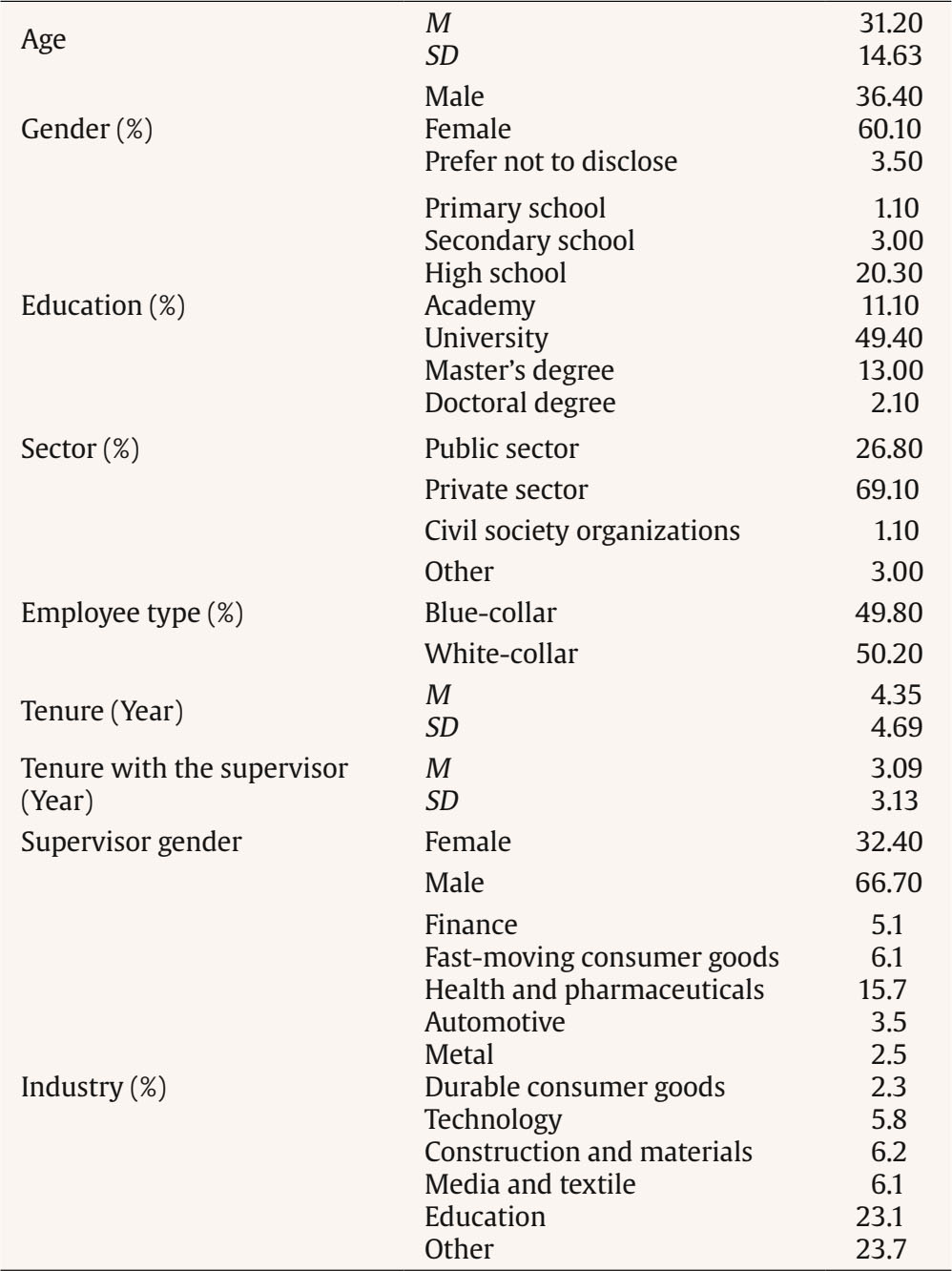

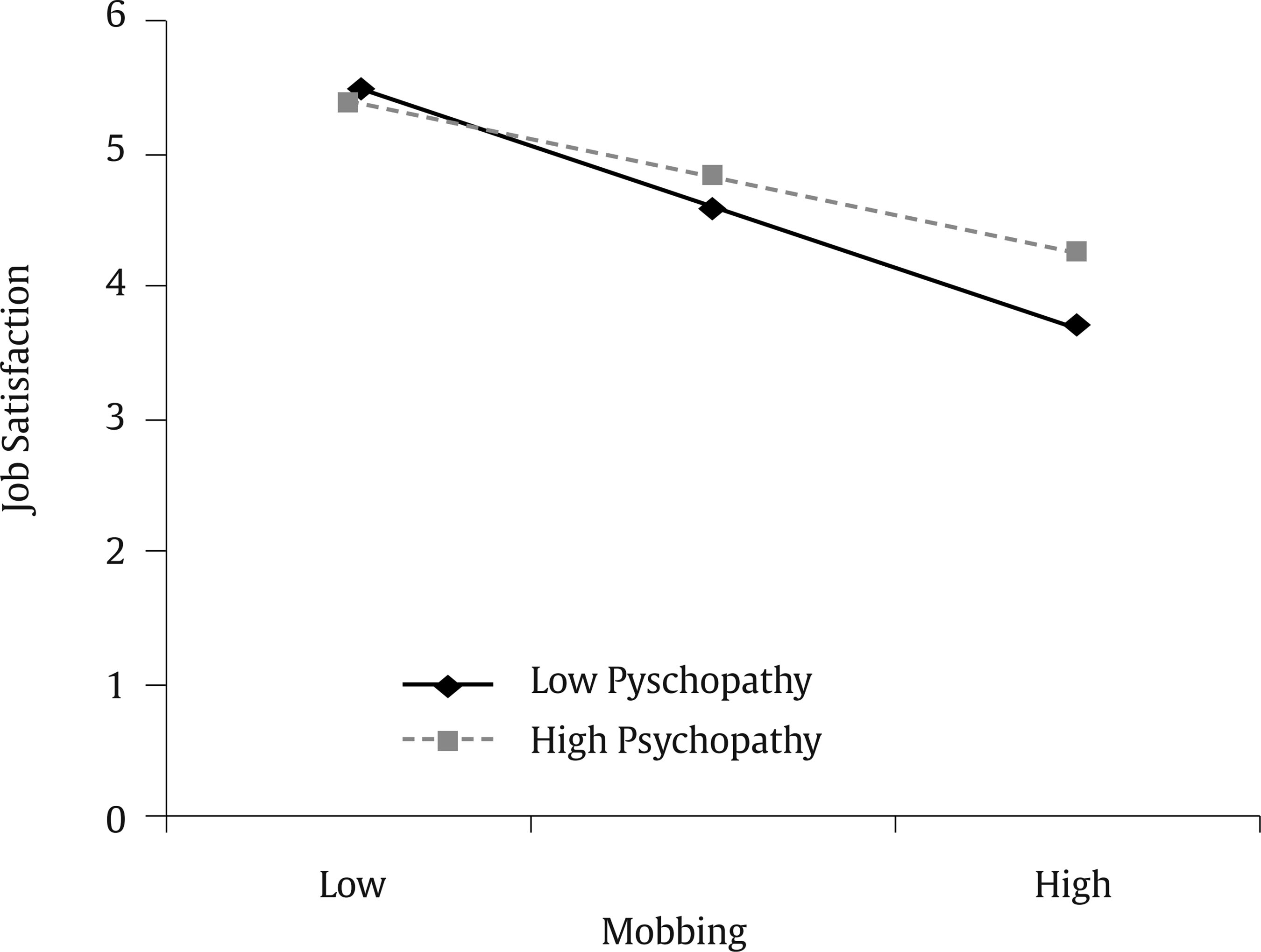
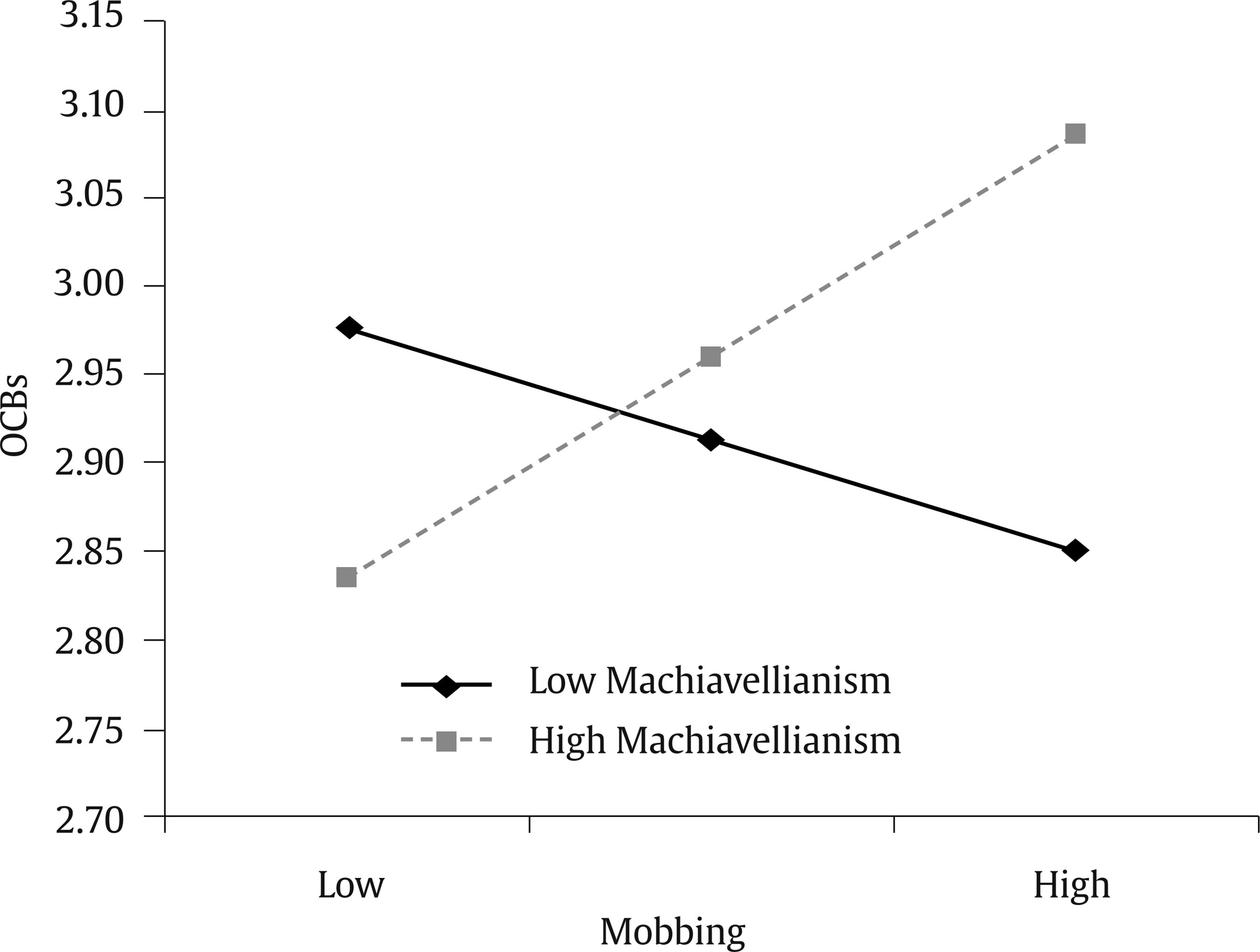
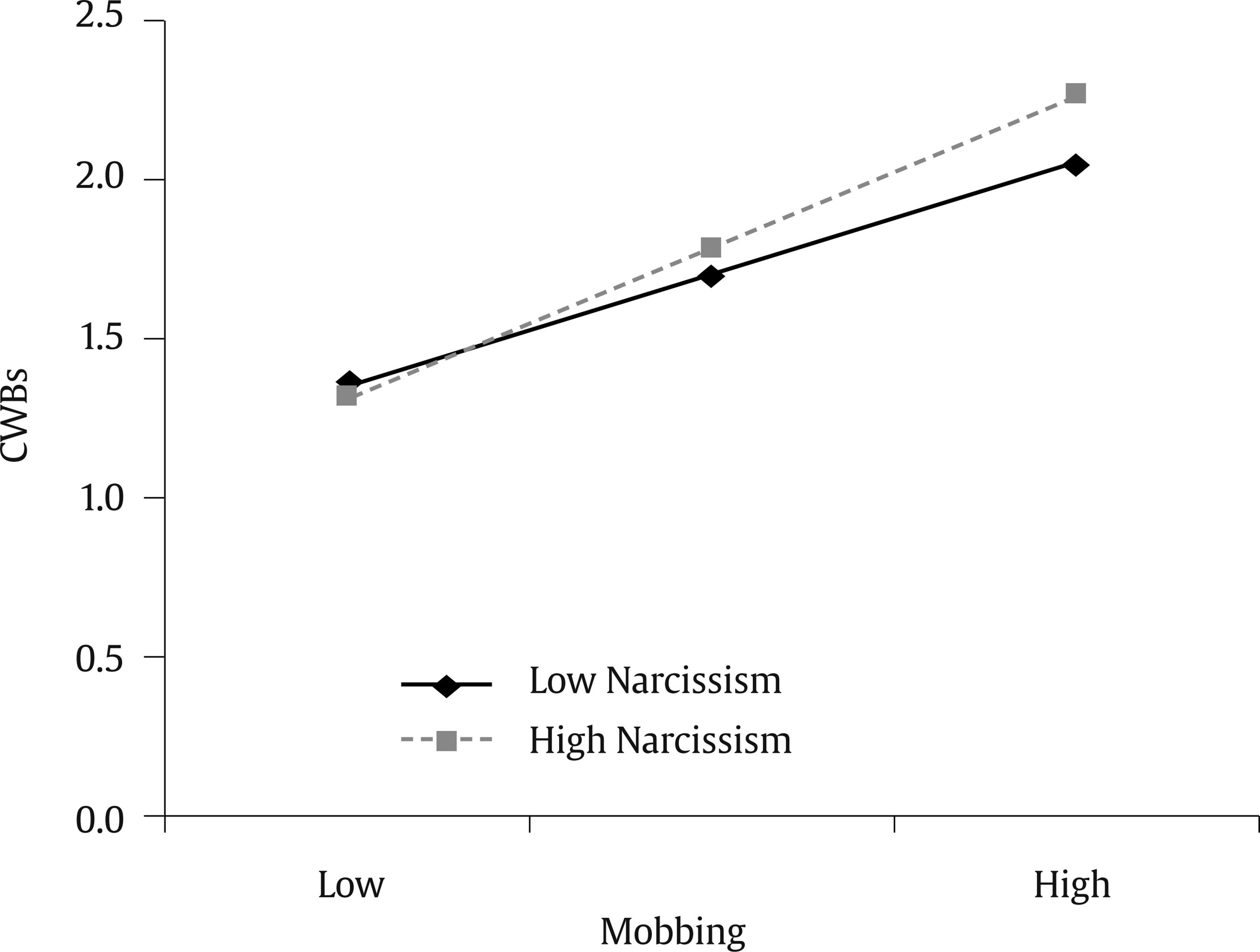
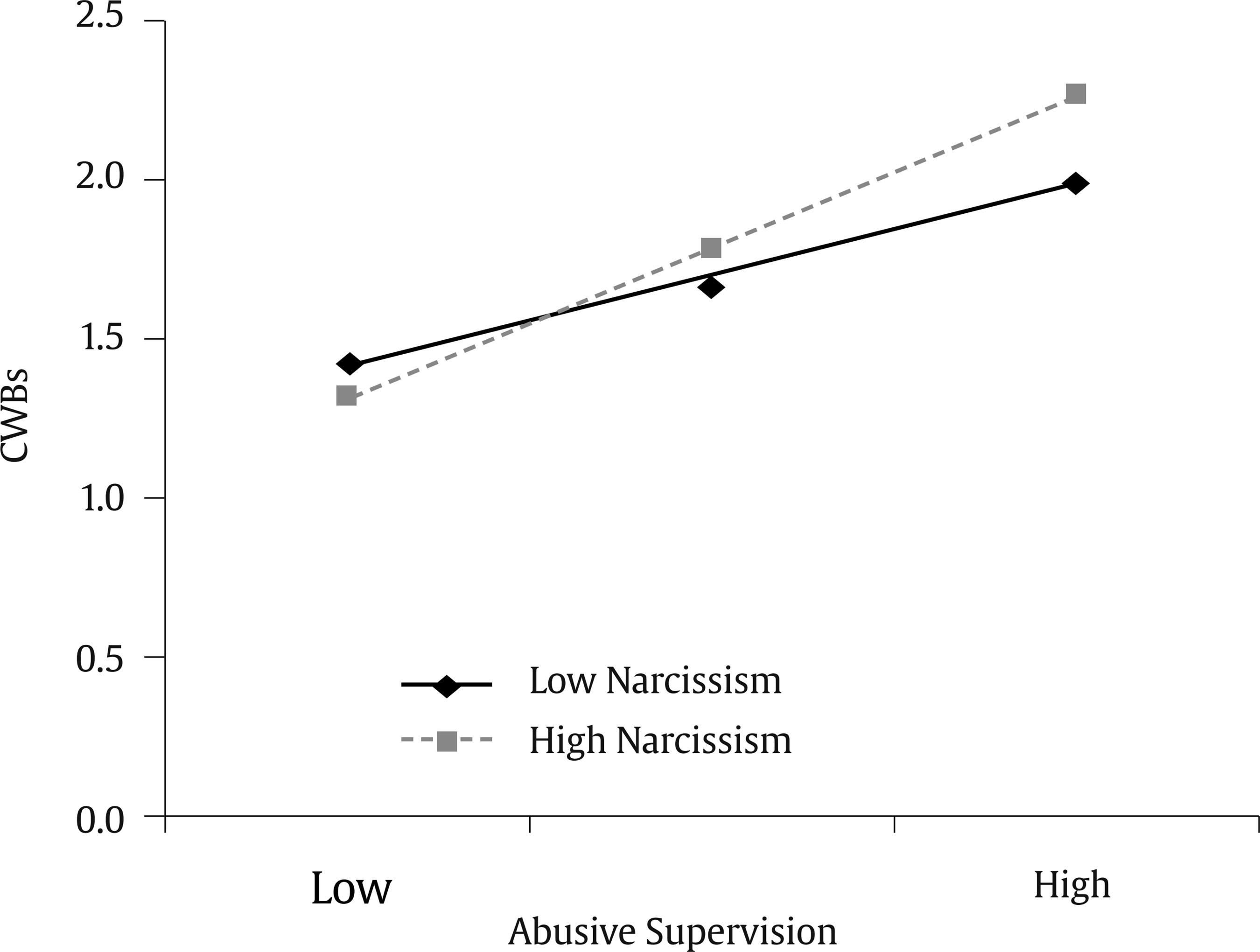
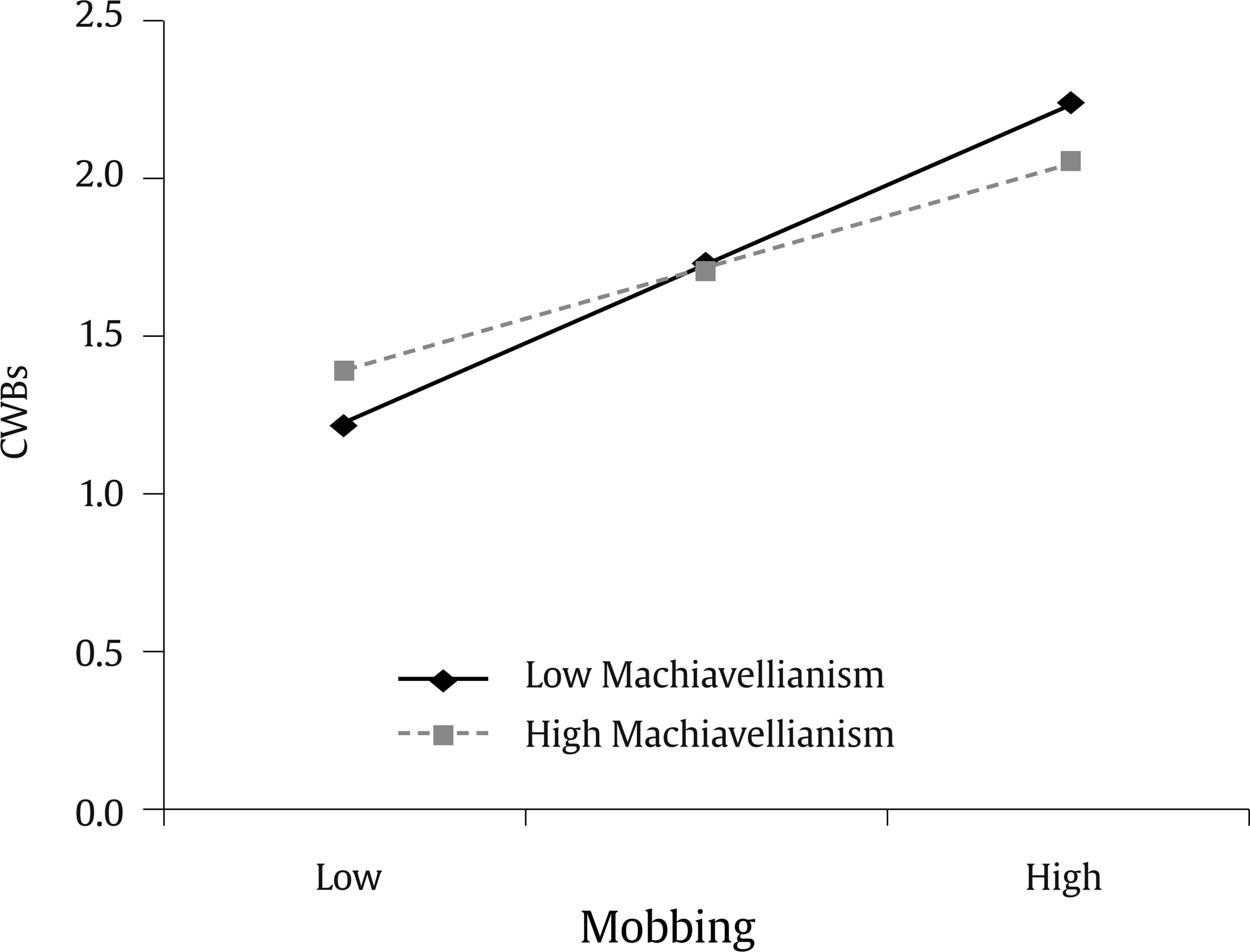
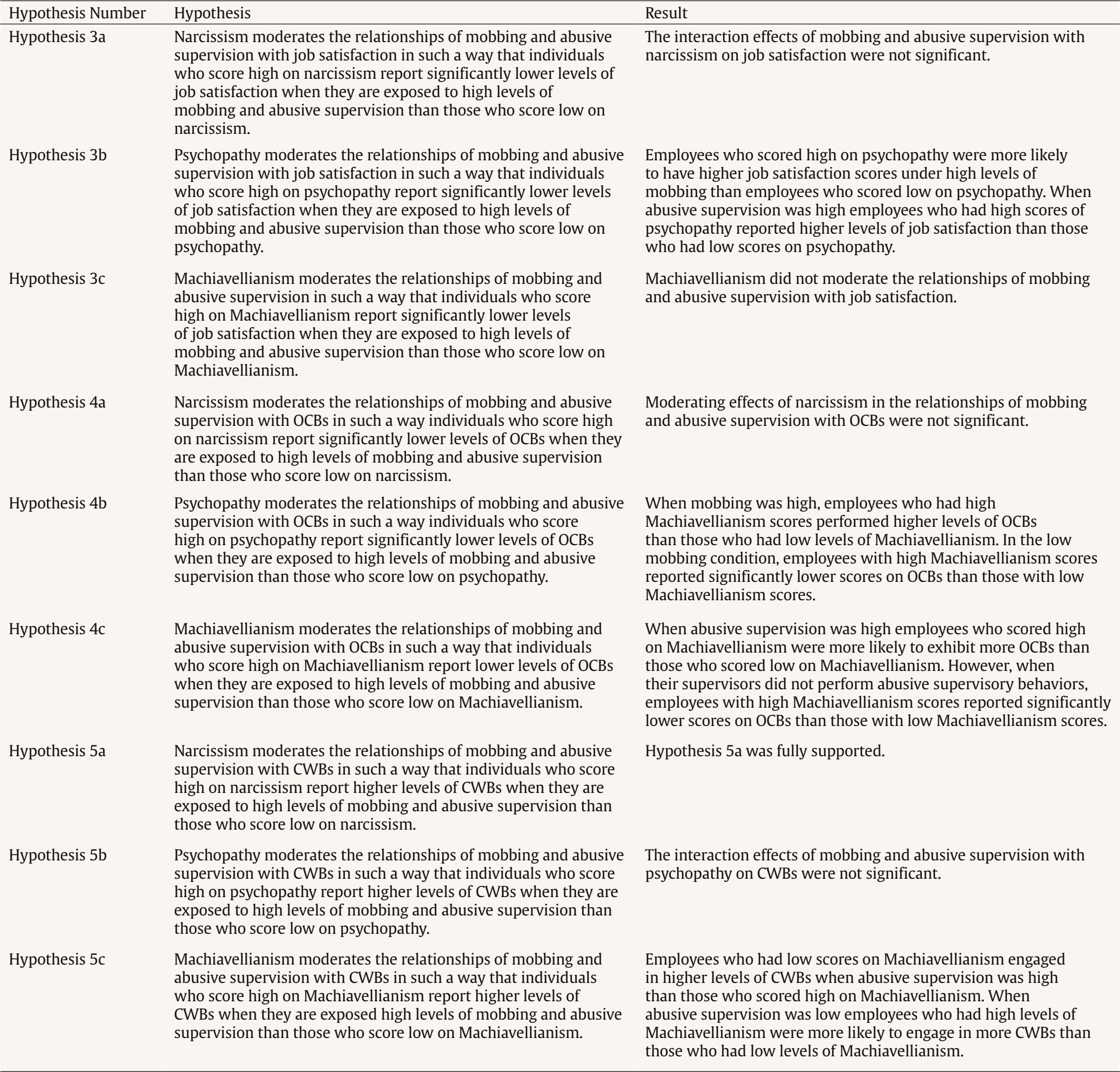






 e-PUB
e-PUB CrossRef
CrossRef JATS
JATS






